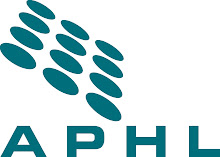Did you know that laboratories are vital to protecting us from harmful contaminants in our environment?
Public health laboratories measure contaminants once they get into our bodies, while environmental laboratories measure contaminants in the environment itself (in the air, water or soil).
To better illustrate the importance of the lab’s role in protecting us from environmental contamination, here is a fictional but realistic scenario:
A group of six young men, all apparently friends, arrive at a local emergency room with similar symptoms: nausea, vomiting, headache, fatigue and weakness. The ER immediately takes blood and urine specimens, sending them to the hospital labs for screening while simultaneously contacting the state Poison Control Center for advice.
Tests indicate cell and tissue decomposition and the Poison Control Center suspects radiation sickness. They recommend calling the state public health lab for guidance. Meanwhile, all of the patients and medical staff who came into contact with these men (receptionists, nurses, and physicians) enter quarantine. The men’s clothing is secured.
The public health lab contacts the local FBI field office, which immediately sends agents, while the Department of Defense’s Civil Support Team begins processing the men’s townhome. A suspicious white powder is found along with documentation on a laptop linking the men to a recent theft totaling over $75M in radiopharmaceuticals. Following confirmation of radioactivity, the scene is evacuated and cordoned off.
Meanwhile, the FBI locates a storage unit rented by one of the men under an assumed name. Upon search of the unit they find more of the white powdery substance as well as containers of paint remover, concentrated sulfuric acid and hydrogen peroxide. In addition, the unit contains laboratory equipment (glassware, distillers, mixers, an ice bath and filters).
Ultimately, the white powder is determined to be Triacetone Triperoxide (TATP), a powerful, highly unstable homemade explosive. Apparently, the men were trying to build a dirty bomb and were exposed to the radioactive pharmaceutical they had stolen.
People who came into contact with these men remain concerned about their potential exposure, so the state public health lab tests their urine. The results reassure the medical staff and the men’s neighbors that they need not worry. The state environmental laboratory tests soil and water samples from around the storage unit and the men’s townhome; much to local policymakers’ relief the results show no reason for concern.*
Thanks to the coordinated response between the hospital, the Poison Control Center, the Civil Support Team, the public health laboratory, the environmental laboratory and the FBI, the terrorist plot was foiled. Public health and safety were protected!
* Note that there is no national program for radioanalytical laboratory preparedness and response. Some states are better able to test for radioactivity than others, some not at all.
For more information on environmental health and laboratories see www.aphl.org/eh
For more information on Earth Day see:
- Top Ten Actions Individuals, Organizations, and Businesses can Take in Reducing Their Contribution to Global Warming
- Commit to taking action or sign up for daily green tips






No comments:
Post a Comment